Berea, Greece was once a part of the Kingdom of Macedonia. In 148 BC Andriscus was assassinated and the Kingdom of Macedonia (a Roman providence) was divided into four portions (with communication restrictions put in place between the people of the four portions – to keep the people subject to the Romans. Restrictions between the portions of Macedonia were removed with the establishment of Pax Romana, although the divisions remained for administrative reasons.
1. The first portion of the Kingdom of Macedonia in 148 BC included Eastern Macedonia (Philippi, Greece) and is mentioned in Acts 16:12.
Acts 16:12 So, setting sail from Troas, we made a direct voyage to Samothrace, and the following day to Neapolis, and from there to Philippi, which is a city of the first portion of the district of Macedonia, a city or village with special privileges.
The first portion of the Kingdom of Macedonia includes the little village of Philippi, Greece – “a city of the first portion of the district of Macedonia”. New Testament translators sometimes use the terms “living city” or “leading city” in Acts 16.12. However, Philippi was not a living city or a leading city. It was small like a village. Philippi, Greece was included as a city of the first portion of the district of Macedonia.
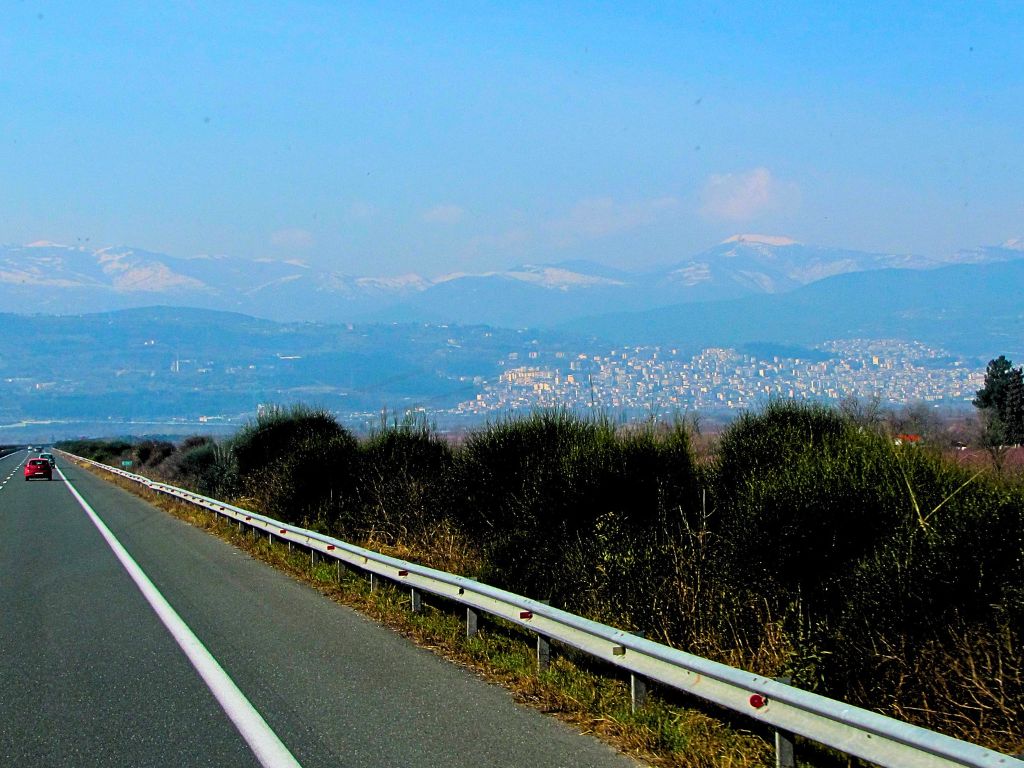
2. The second portion of the Kingdom of Macedonia in 148 BC included the center of Macedonia (Thessaloniki, Greece)
3. The third portion of the Kingdom of Macedonia in 148 BC included Western Macedonia (Berea and Mount Olympus, Greece)
Berea, Greece was in what is known as the third portion of the Kingdom of Macedonia (148 BC.) The city of Berea today bases its economy on agriculture. Bereans cultivate and export various fruits: peaches, apricots cherries, pears, apples, and even kiwi.
4. The fourth portion of the Kingdom of Macedonia in 148 BC included Northern Macedonia (which is more or less at the same place where there is now a modern Slavic state having this name.)
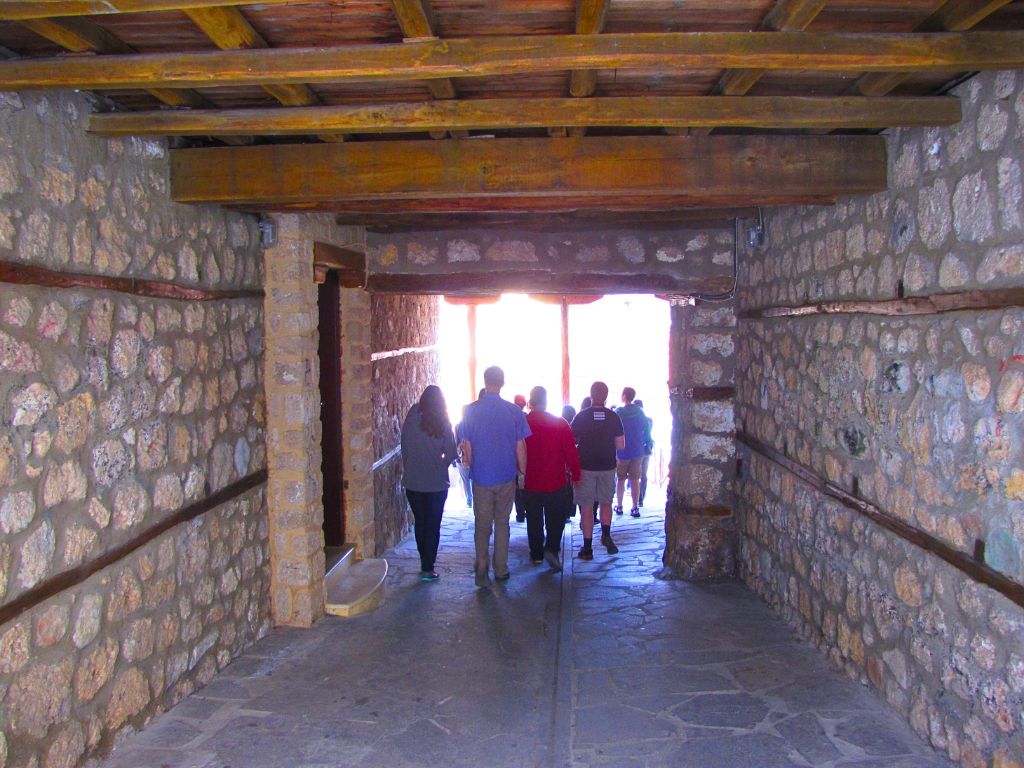

We do not see antiquities in Berea because the ancient city is buried beneath the city. We do not see any original buildings, but we do see the locations of antiquity.
1. The first important location of antiquity in Berea, Greece is the area of the river with a spring.
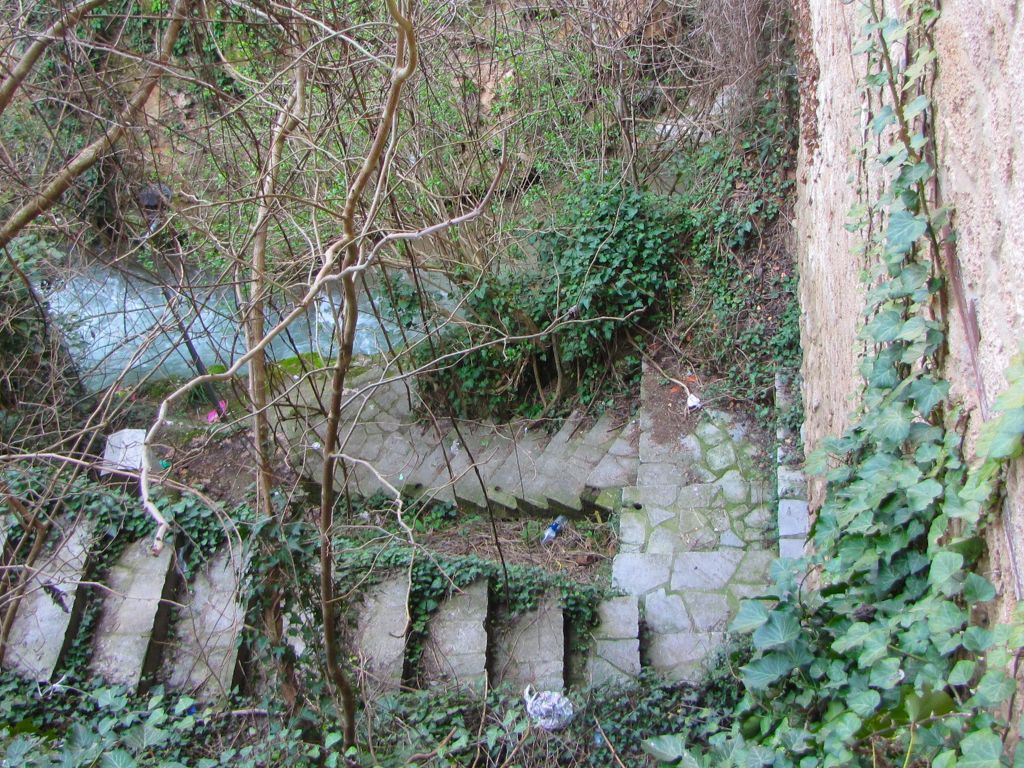
In antiquity, Jews gathered outside of the pagan city of Berea, beside living water, beside the spring of living water. (As we saw in Philippi at the River of Lydia.)
Gathering outside of the city, next to living water, was a Jewish tradition that indicated piety. However, in most of the Jewish communities of the Diaspora, gathering by the living water was abolished after 2 BC.
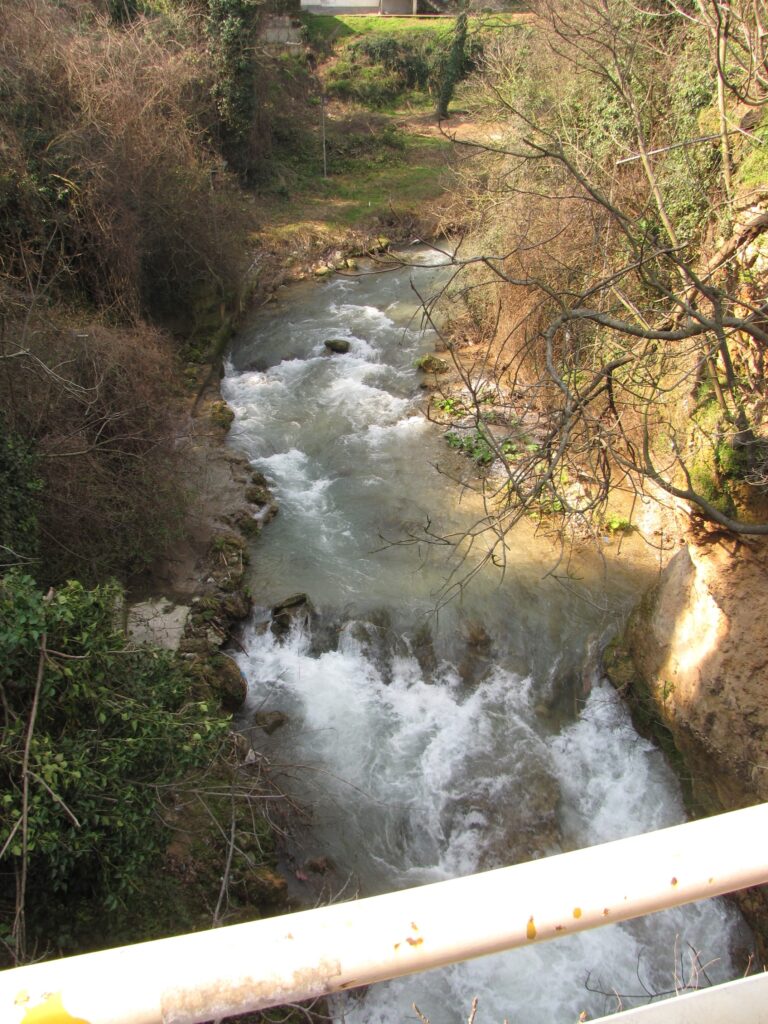
2. The second important location from antiquity in Berea, Greece is the Jewish Quarter.
One of the two gates of the Jewish Quarter was developed in the Middle Ages into what was called the Middle Age Jewish Ghetto. The ghetto (with the style of building attached house), was built by the Jews for their own protection, but in many cases, the attached houses turned into a trap for the inhabitants. This happened in 1943 when the Germans blocked both gates of the Jewish Quarter. The Germans got into the site of eight hundred people, who were all arrested, and all removed.
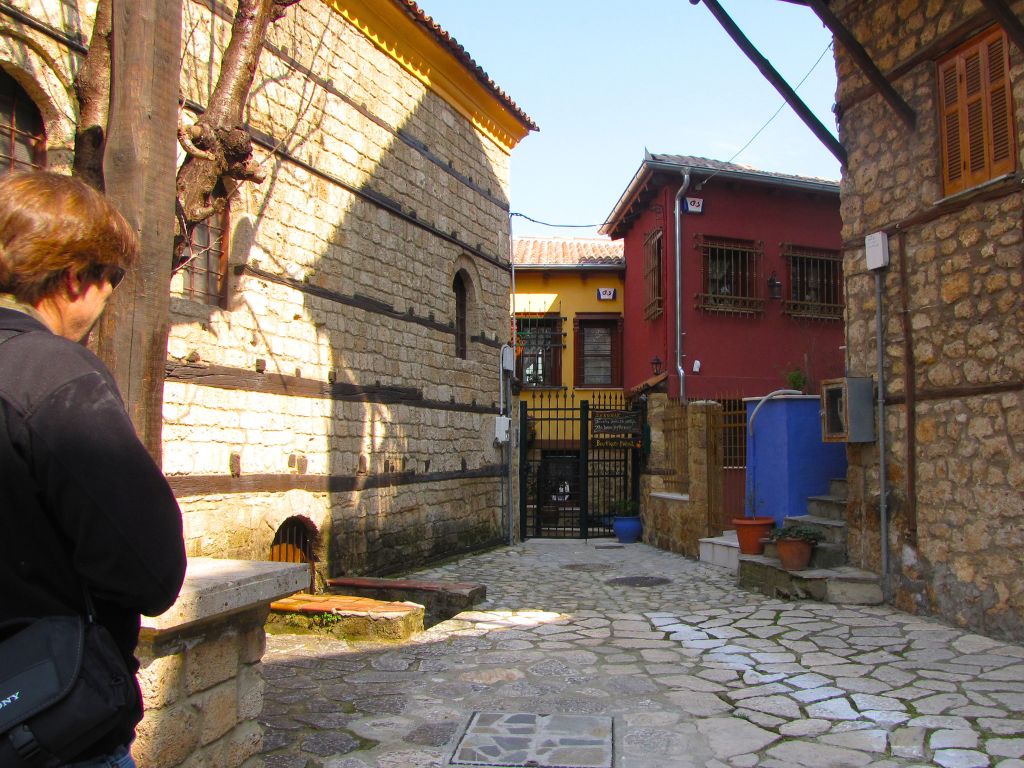
The Jewish Quarter here was plundered but was not destroyed (like it was destroyed in Thessaloniki.) In Thessaloniki, the Jewish people were 100,000. And they were scattered throughout the whole city. So, it was difficult for the German army to find them. The Germans, who had been friendly with a high rabbi who had a German education, persuaded the rabbi to give to the German authorities all the names and addresses of the Jewish families of Thessaloniki. So, the Germans went from house to house. They arrested the people; they plundered their houses and destroyed their houses. Thessaloniki, before the war had thirty synagogues, and of them only one survived. It had been given by the Jewish community of Thessaloniki to the Red Cross to become its headquarters. There was a very systematic effort to erase even the memory of the biggest Jewish city of that time.
Since the classical time, Jewish presence was in the city of Berea. The Jewish Quarter survives, but the Jewish people of the quarter decided to move to Israel. Today two families remain in the city, and they don’t dwell in the Jewish Quarter; they dwell in the city. The Jewish Quarter was sold to non-Jewish people, but it is under protection because of its architectural style of attached buildings. The Jewish Quarter was originally located outside of the city walls along the side of the river.
3. The third important location from antiquity in Berea, Greece is the location of the city walls dating back to the pre-Christian era. The lower part of some houses in Berea are built on city walls.
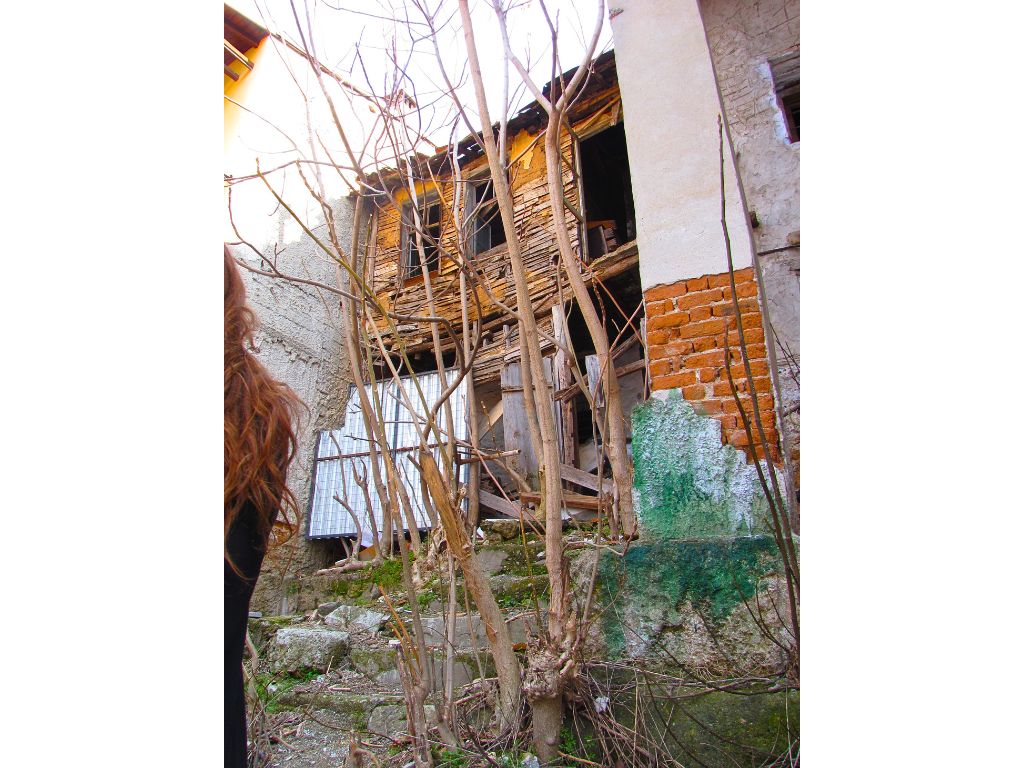
The only remaining Jewish property in the Berean Jewish Quarter is the synagogue, which is the location of ancient Jewish scrolls – holy books.
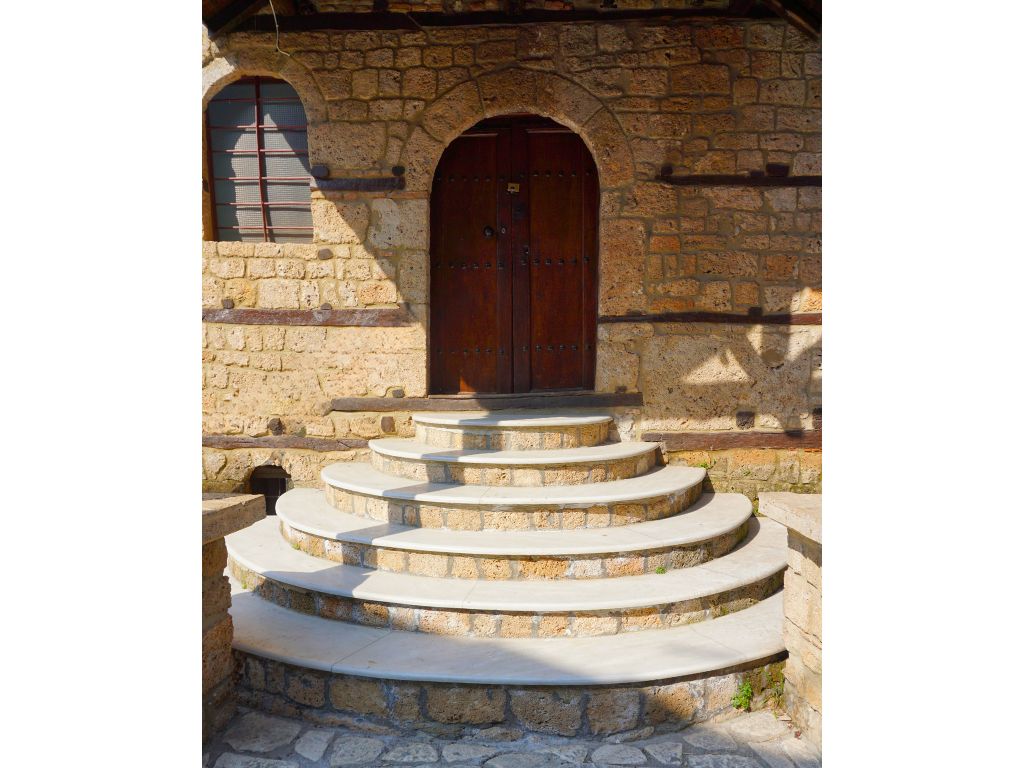
In the synagogue holy books notes were inscribed in the margins of the books. As in all religious institutions of antiquity (from the early Middle Ages up until the seventh century A D) notes were written by the people responsible for the religious institution. These notes are related to the unique events of the institution. The notes were written like calendars or diaries – especially important today for scholars because the notes provide very precise historical information. In the seventh century AD, the Masoretes prohibited the use of written notes, and written additions, on the scrolls of the Torah and on other religious scrolls of the synagogue. So, these incredibly special and especially important scrolls were not used in the daily use of the synagogue. They were pachue, out of use, but still very precious relics.
So, in the margins of the Jewish scrolls of Berea, notes had been written in the scrolls. These notes were all in Greek. And in an incredibly special scroll, we have a note about the visit of the Apostle to Berea. It starts out with some background information, “when politarches [πολιτάρχης] of the city were (this and these people) and proconsul of the province of Macedonia, (this person)…”
Then the note says something significant about the visitor to Berea: “Our synagogue was visited by a brother from Jerusalem called Saul, who came here and spoke to us about the resurrected Messiah.”
This note kept that scroll hidden.
Until 1943, the Berean Synagogue preserved 13 scrolls. One of them was a Torah, written in Aramaic and dated by the Jewish scholars of Thessaloniki back to the second century before Christ, which means the same time as the Dead Sea Scrolls. The existence of the Scroll of Berea was kept secret by the Jewish community due to the note about Paul’s visit, which was on the margins. The famous Scroll of Berea is a strong indication of the antiquity of the Jewish Quarter in Berea.
Then in 1943, the German army plundered the synagogue of Berea and the Jewish Quarter. Eight hundred Jewish people were arrested in Berea. All of the Jewish treasures of Berea were brought to Berlin, Germany for storage in a place, called by the Germans, the Jewish Museum. After the Holocaust, only 144 Jews survived.
But the survivors went to the storage place of Jewish antiquities, the Jewish Museum, and they demanded back the Scroll of Berea (not all of the scrolls, just this specific scroll). However, the Jewish Museum storage was under Russian administration because Targaryen Jews had authorized the antiquities to Russian administration due to some Russians who were close to some Targaryen.
In the beginning, for a while, Hungarian Jews had tried to use the Berean Scroll, because they didn’t have any other scrolls to use. Then the Hungarian Jews decided to sell it to a Hungarian, a Jewish collector who had moved, at that time, to Austria. His name was Ernest Klein, a rich Jewish rabbi. Ernest Klein refused any cooperation to research the scroll. Later with his treasures, he again moved, this time to Canada. And since then, nobody has seen the scroll again.
The Jewish survivors of Berea started to make noise about the scroll, and they wrote letters to different governments, the Greek government, and the Austrian government, and they wrote articles in newspapers demanding the scroll back. But all the noise about the scroll ended when the Jewish community in Berea decided to move to Israel. And since then, nobody remembers the Scroll of Berea anymore.
The fact is, if that scroll truly exists today, then it is a secondary source of historical information outside of the Bible. It is a secondary source about the Apostle Paul – which would then automatically make the Apostle Paul a historically identified personality. The Apostle Paul, so well-known to Christian readers of the Bible, is not considered scientifically a historical personality because we don’t have at least two written sources from his time to cross-reference information about him.
Some buildings in the Jewish Quarter have been purchased by the municipality, and they house state institutions now. But definitely, the current Jewish Quarter preserves its architectural character, which goes back to the 17th century, 16th century, or something like that. Because of the constant renovation in Berea, you cannot find buildings or parts of buildings older than the 16th century. But the location of the Jewish Quarter remains the same.
For the city’s expansion, the main gate of the Jewish Quarter was demolished by the Ottoman authorities at the end of the 19th century. Today the modern city of Berea has expanded, and the Jewish Quarter is (almost) in the center of the city.
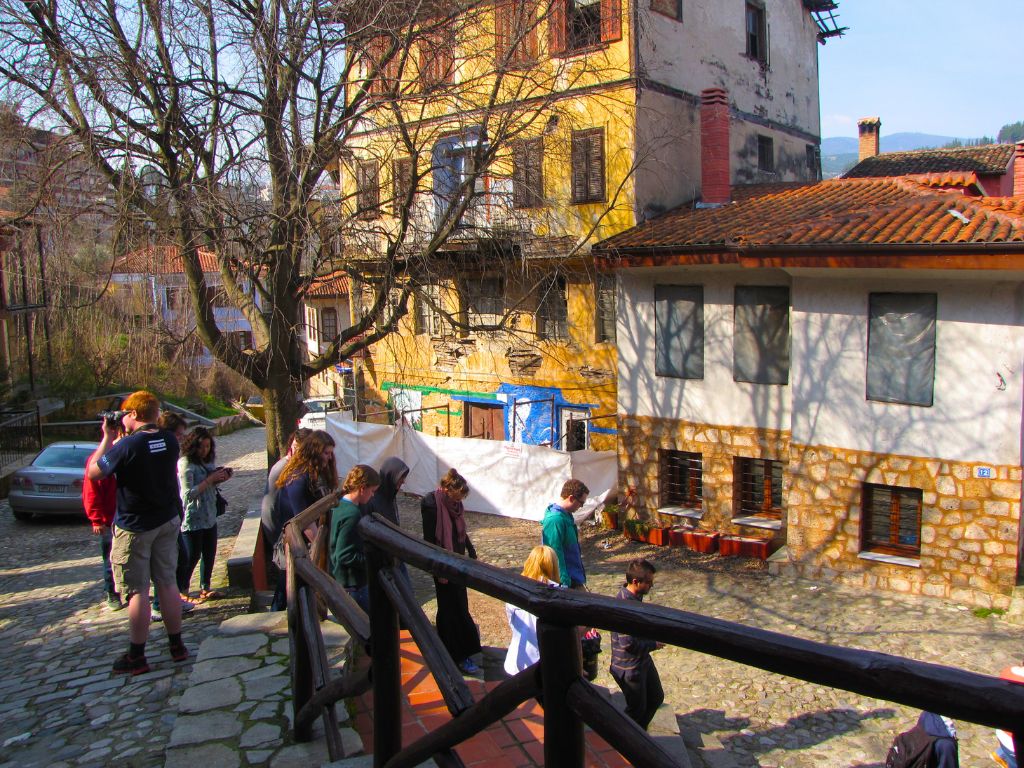
Some years ago, the whole road, the pavement, was preserved. But the municipality decided to bury it and preserve only some of it for antiquity and as a memory of the city. We can see what remains from the right-hand side. If you enter the main street of the Jewish Quarter look on the left side for the building of the municipality, an old building with flags. Look just outside of the walk and you can see a part of the pavement of the ancient Jewish Quarter Road. The main street of the modern city is identified with the ancient Main Street.
At the end of the road, is the town square, the Agora, in the same location as in the ancient Agora. Still today it is the same square, the same center for the city. The city walls followed the line of the road all the way to the Agora. At the crossroads, there used to be a gate. The city walls were there until the end of the 19th century, relatively recently, crossing to this way, outside of the city. It is particularly important for us to know the limits of the historical city.
City walls were not just for the time of the war. City walls, during the old days, were to protect the city and the citizens all the time. During the night, the gates were closed and everything that happened in the city was under control. What if a crime happened in the city at night? Yes, the criminal who had offered a problem inside the city walls could easily be arrested because he couldn’t escape the city. The city walls were the main factor of security. But also, if somebody had decided, at night, to stay outside of the city walls, he had to face the security problem by himself.
In the Jewish Quarter, we can see the development of a special building system by the Jewish people who had decided to live outside of the pagan cities of antiquity, outside of the city walls. The Jewish people built their houses, one attached to the other, without any space or any yards between the houses, forming a kind of city wall on the outside with an inner, central, little agora built for the whole community.
In Berea there is a part of the city wall from the Ottoman time.

People could enter and exit the Jewish Quarter only from certain gates. And so, the communication of the quarter was under control.
Today you can see houses in the Jewish Quarter. You see houses that are still inhabited, some are abandoned. Gradually the old houses are renovated. Some of them are turned into boutique hotels, two of them at least.
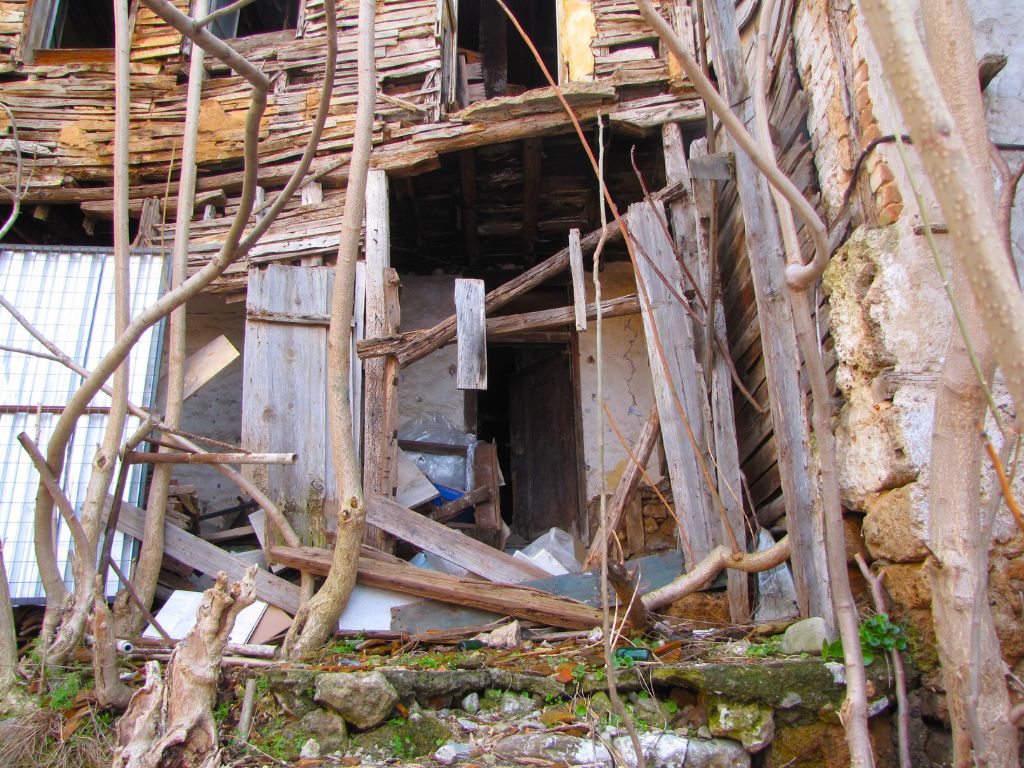
You can see the building style, one building attached to the other with no space between.
Imagine archaeologists digging at this location. They would find the city wall, and a layer of dirt at the top but all the wooden parts and the adobe would be gone. Do you remember that we also saw short walls in Philippi, Greece?
From the site of the synagogue, you can read the New Testament passage that relates to Berea.
Remember, the Apostle Paul escaped by night from Thessaloniki, Greece, and arrived in Berea, Greece after covering a distance of two days.
Remember Paul was a stranger to the Bereans, a carrier of strange ideas. The Apostle Paul was a strange foreigner with strange ideas. The Jewish community of Thessaloniki, which related to the Jewish community of Berea, was against him.
Paul was a very suspicious person and although he was a very suspicious person the Bereans helped him to escape. Paul had escaped from Thessaloniki by night to come to Berea and the Bereans gave hospitality to him. Paul only stayed in Berea a brief time, not very long, because when the Thessalonian Jews discovered that he had escaped from Thessaloniki to Berea, the Thessalonian Jews came after Paul. They were against Paul.
The Berean Jews took it as their responsibility to bring Paul to escape – by way of the sea. Taking a boat from Berea to Athens at that time was expensive. But they didn’t stop there. The Bereans bought passageway tickets for themselves too, and they escorted Paul down to Athens, approximately 500 km. To return from Athens, possibly they walked back to Berea, something that would take about a month, through very tight mountain ranges. Their hospitality was beyond the standards that we can conceive. Can you see yourself being so hospitable to a stranger with strange ideas?
Okay, if you like we can open the Bible to the New Testament book of Acts.
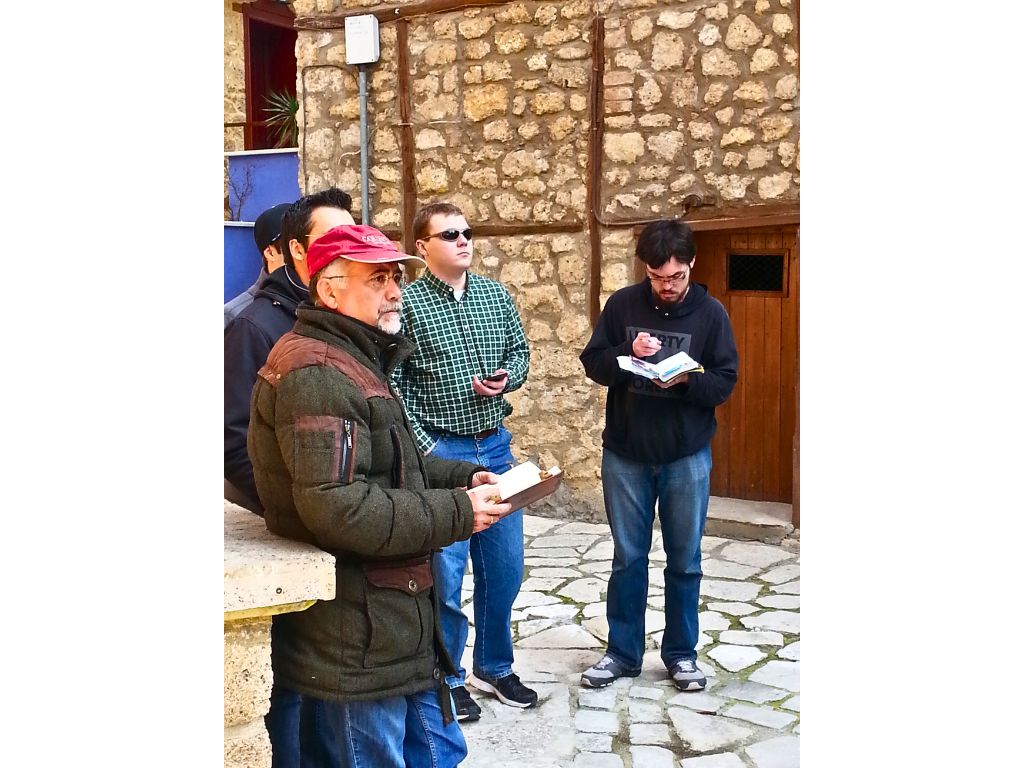
Acts 17:10-15. Five verses:
“The brothers immediately sent Paul and Silas away by night, and when they arrived, they went into the Jewish synagogue. Now these Jews were more noble than those in Thessalonica; they received the word with all eagerness, examining the scriptures daily to see if these things were so. Many of them therefore believed, with not a few Greek women of high standing as well as men. But when the Jews from Thessalonica learned that the word of God was proclaimed by Paul at Berea also, they came there too, agitating and stirring up the crowds. Then the brothers immediately sent Paul off on his way to the sea, but Silas and Timothy remained there. Those who conducted Paul brought him as far as Athens, and after receiving a command for Silas and Timothy to come to him as soon as possible, they departed.”
Let’s go now to see a little bit more of the Jewish Quarter.
To find specific archeological information in the Jewish Quarter you would need to remove the existing buildings – something which cannot happen. The buildings you see are still standing and some are fully renovated inside and outside preserving parts of the original decoration.
What used to be the house of a rich commercial Jewish family, today houses the International Institute of Traditional Architecture and you can see a Jewish inscription and the dates according to the Jewish calendar – which counts time since the creation of Adam – this is why you see the numbers there. And they still use a lunar calendar and not a solar calendar, like we do.
The location of the Jewish Quarter is a very strong indication of antiquity.
Recently an old house was renovated into a boutique hotel. Today it is called, The House by the River.
The House by the River Ολγάνου 4 591 32 Véroia
According to the tradition of the local Jewish community, that corner was the place where once per year, just before Passover, the sacrifices were made and blessed.
This is not a door or a window, but something else.
So, this door was opened during the sacrifice time and the rabbi appeared there to bless the sacrifice. I don’t know if you’re familiar with the term kosher, which means purified food. Yes, the restrictions.
And of course, you see the living water. Remember we saw the same in Philippi, Greece. A necessary element for a pious Jewish community, something which was gradually abolished after the second century BC. In Greece, we have the privilege of having the oldest, found Jewish synagogue, which is the Synagogue of Delos, dated back to that time, the second century BC, and there is no older found synagogue, even in Israel than the Delos Synagogue outside of the city by the sea, living water.
Visit Havra Bridge, Berea Greece
We gathered at the bus, hungry, ready to arrive at the parking lot of our restaurant, before heading to our church concert and sleeping quarters for the evening.
